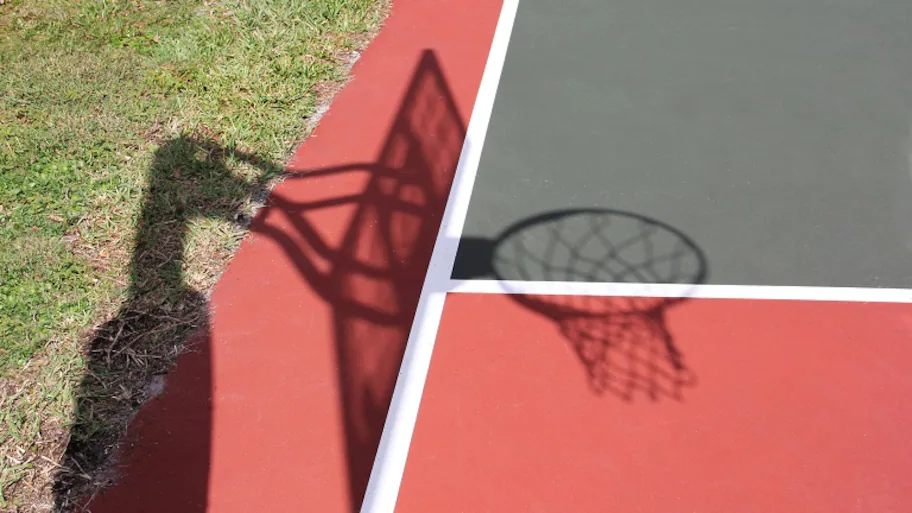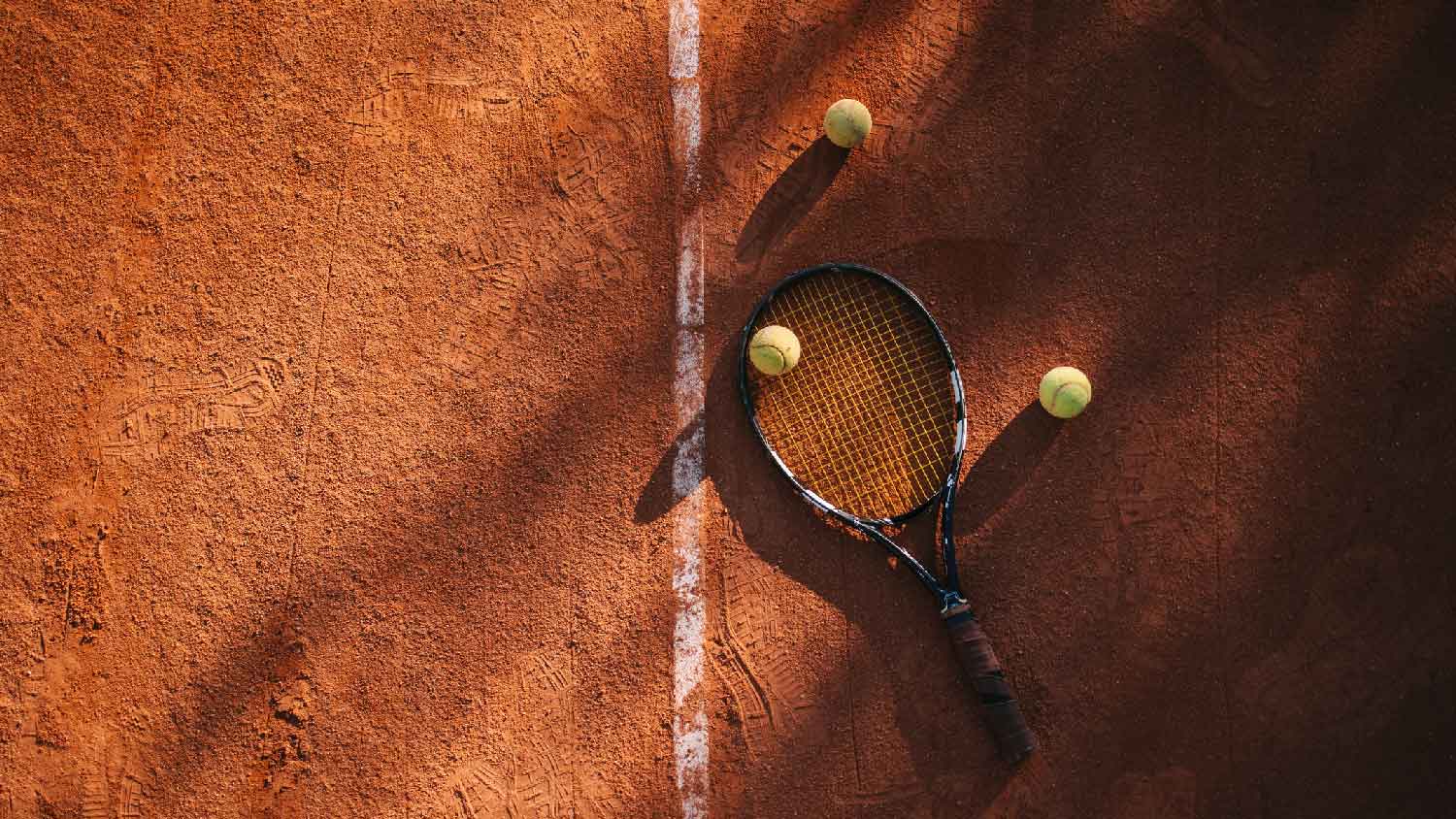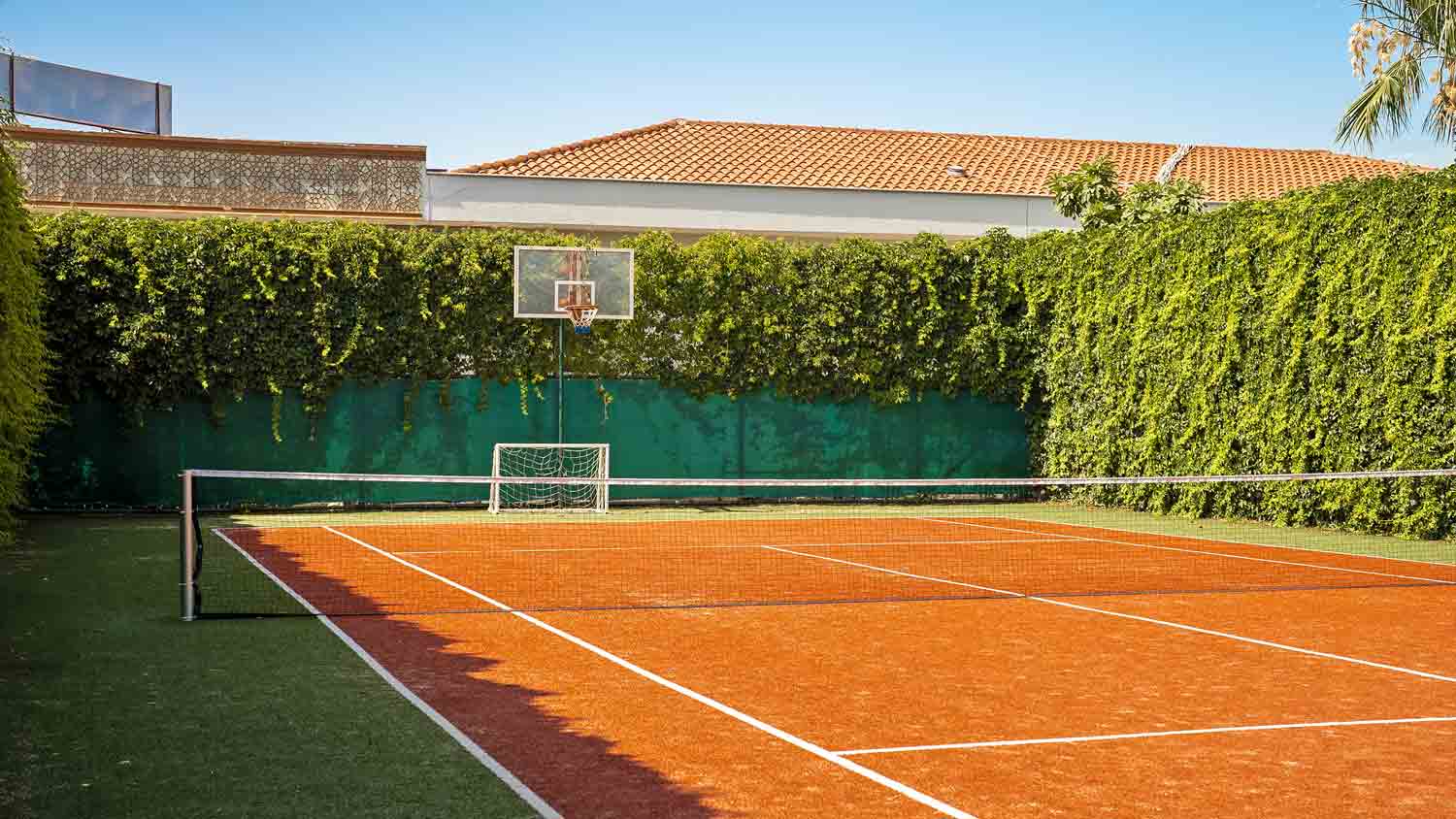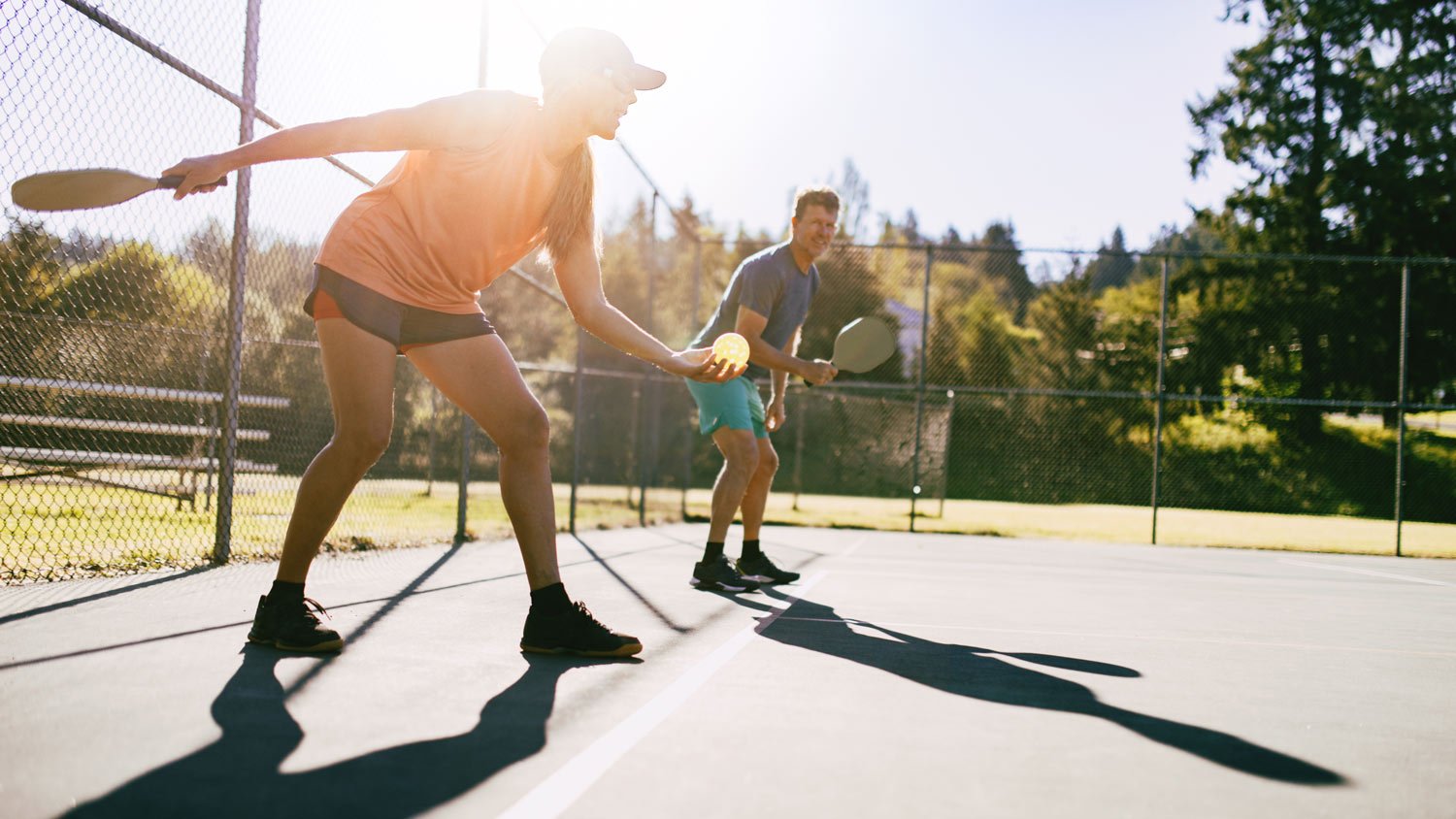How Much Does an Indoor Basketball Court Cost? [2025 Data]
An indoor basketball court costs around $4,900 on average, but you could pay anywhere from $1,900 up to $14,400, depending on the size, quality, and materials.


Diehard basketball players dream about having their own in-home court, and with a little work, it can become a reality. Indoor basketball courts cost around $4,900 on average, and you can build them in areas such as garages, barns, or house additions. Depending on the size, materials, and other factors, your price could land anywhere between $1,900 and $14,400.
Here we will break down the costs of an indoor basketball court and a bit about the process of creating one.
Indoor Basketball Court Cost per Square Foot
On average, an indoor basketball court will cost $3.50 to $19 per square foot total, depending on your material choices and labor costs. This is a big range, but what types of materials you choose and any existing structure you have makes all the difference.
Flooring and labor are your two biggest investments. Maple hardwood runs $3.50 to $6 per square foot plus $3 to $8 per square foot for installation. It’s the gold standard for basketball court floors, so for many serious players, it’s well worth the price tag.
Laminate flooring is a fraction of the cost, at $0.70 to $2 per square foot and between $1 and $2 per square foot for the labor.
You could also forgo additional flooring altogether and just play on a cement slab. In this case, you’ll likely want an epoxy floor coating to protect the concrete. Materials and labor run approximately $6 per square foot.
Indoor Basketball Court Cost Factors
The price range for an indoor basketball court is so wide because there are a few factors that can bring your total up or down by thousands—and sometimes tens of thousands. You’ll need to consider the following cost factors to get an accurate project estimate.
Type of Court
The difference between playing on an NBA-size court and a small, recreational 3-on-3 court is night and day, and so are the costs associated with installing each of them. In fact, the type of court you want in your home is one of the most influential factors when it comes to pricing.
You can use the table below to get an idea of what your court will cost based on its size.
| Type of Court | Size of Court (Length x Width in Feet) | Typical Cost |
|---|---|---|
| 3-on-3 mini court | 36 x 50 | $6,300–$34,200 |
| Elementary school court | 50 x 42 | $7,350–$39,900 |
| Half court | 47 x 50 | $8,200–$44,650 |
| Middle school court | 74 x 42 | $10,900–$59,000 |
| High school court | 84 x 50 | $14,700–$79,800 |
| College/Pro court | 94 x 50 | $17,000–$90,000 |
Flooring
Your flooring material cost can range widely with maple hardwood, coming in at around $3.50 to $6 per square foot for the wood plus another $3 to $8 per square foot for installation.
On the more affordable end, working with an existing cement slab is also an option. Consider applying an epoxy floor coating to protect the concrete. The price of an epoxy coating depends on the type and square footage. On average, it’s approximately $6 per square foot for materials and a professional installation.
Laminate flooring can give the appearance of a standard floor, but at a much lower cost of between $0.70 and $2 per square foot, plus $1 to $2 per square foot for the labor. This flooring won’t be nearly as durable as maple hardwood, though.
| Type of Flooring | Typical Cost (Installed) |
|---|---|
| Laminate | $1.70–$4 |
| Maple hardwood | $6.50–14 |
| Sealed concrete | $6 |
Materials
As is the case with any home improvement project, the materials you choose for your indoor basketball court are going to make a big difference when it comes to your pricing, and that’s even after you get your flooring type sorted out.
| Material/Add-On | Typical Cost |
|---|---|
| Paint markings | $200–$350 |
| Basketball hoops | $550–$5,000 each |
| Scoreboard | $1,000–$5,000 |
| Benches | $100–$1,000 each |
| Lighting | $200–$1,000 per fixture |
| Structural costs | $0–$80,000+ |
Painting Coat Markings
If you’re going through the process of installing an indoor basketball court, you will, at the very least, want to know if you’re actually making those three-pointers. Expect to pay around $350 to have a professional paint court markings on your flooring for a full-sized court. You can expect to pay closer to $200 for a half court or a 3-on-3 court, and somewhere between those numbers for the other sizes.
Basketball Hoop
You’ll also need to budget for one or two hoops to complete your court. For most indoor courts, you’re going to want mounted hoops, which will cost between $600 and $3,000 each, not including installation. Fully installed, you’re looking at between $1,000 and $5,000 each.
You can also opt for wall-mounted hoops, which will cost between $400 and $800 each. With installation, those will sit between $550 and $1,000 each.
If you’re putting in anything other than a half court or a 3-on-3 court, remember that you’ll need to double these prices to hire a local basketball hoop installer.
Scoreboard
If you want to expand your indoor game room ideas and make the court feel official, you need to consider putting in a scoreboard. You can get a rolling scoreboard for between $1,000 and $3,000, or you could step up your game a bit and get a wall-mounted, hardwired scoreboard for between $1,000 and $5,000, plus installation.
Benches
An indoor court might not feel complete without benches to rest on between quarters. Expect to pay between $100 and $500 per bench for something that can seat two to three people, or closer to $1,000 per bench if you want to seat the whole crew.
Lighting
Part of the appeal of playing basketball indoors is that you can play any time of day, and for that, you’ll need to add light fixtures to your court space. Expect to pay between $200 and $1,000 per light fixture.
A good estimate of the number of lights you’ll need is around 18 for a full professional court, or around 10 for a half court. That puts your total for lighting at between $3,600 and $18,000 for a full court or between $2,000 and $10,000 for a half court.
Structural Costs
The vision for your indoor court can have a huge impact on the cost. For example, an attached addition to house the court will tend to cost more than a detached addition. If you already have the space built, installing a basketball court will conform to the pricing mentioned above. If you need to build a new space for the court, you’re likely looking at between $15,000 and $80,000 on top of the total court cost above.
Depending on your structure and the climate in your area, you may want to add ventilation and ductwork for an HVAC system, which averages around $1,100.
Labor
Building an indoor basketball court is extremely labor-intensive and time-consuming, so you can expect about 55% of your total cost to go toward labor. Labor costs can vary quite a lot depending on your location, the materials you use, and the experience of the contractor you hire. Labor fees will include the following, among other things:
Laying down flooring
Painting the necessary floor lines
Applying a protective sealant over the floor
Installing or mounting the hoops
Installing and wiring the scoreboard
Mounting the benches, if applicable
Installing new light fixtures
DIY vs. Hiring a Pro to Install an Indoor Basketball Court
Labor costs are high for a project of this magnitude, but that’s because the job requires time, specialized knowledge, and multiple types of flooring and structural professionals. With that in mind, this installation is best left to the pros.
It’s possible to do some of the work yourself, like installing the hoops and benches in some cases, but generally speaking, it’s best to leave everything to a professional. The equipment you’ll need to install is heavy and bulky, and you can easily damage it and end up paying for it twice if you make a mistake.
How to Save Money On an Indoor Basketball Court
Building an indoor basketball court is expensive no matter what, but there are some things you can do to bring your price down toward the lower end of the typical price range.
Complete as much of the work yourself as possible. Don’t attempt laying down the floor or wiring light fixtures, but you could paint floor lines, finish the flooring, and install benches yourself to save some money on labor.
Choose a more affordable flooring. Every owner of an indoor basketball court wants a real maple floor, but you could cut your flooring costs in half by going with laminate or just sealing the concrete slab that’s already there.
Be mindful of add-on costs. For some people, it’s a waste to have an indoor court without a scoreboard and benches. But if you can stomach not having those add-ons, you could save a few thousand dollars.
Go with a smaller court, if possible. A full-size professional court is going to cost nearly double what a half court or 3-on-3 court would cost. If you don’t mind downsizing, you could save tens of thousands.
Consider an outdoor court. If you don’t already have a home addition built to house your indoor court, you could save between $15,000 and $80,000, on average, by opting for a backyard basketball court instead.
| Indoor Basketball Court | Outdoor Basketball Court |
|---|---|
| More expensive | More affordable |
| Great for all climates | Not ideal in some climates |
| Increases utility costs | Minimal effect on utilities |
| Easier to light | More challenging to light |
| Usually lower risk of injury | Concrete floor can promote injury |
| Better longevity | Won’t last as long |
| Less upkeep | More maintenance required |
Frequently Asked Questions
A professional can install a basketball hoop for between $200 and $450. The cost of the hoop, including installation, ranges from $1,000 to $5,000 each for floor-mounted hoops, or between $550 and $1,000 for wall-mounted hoops. Remember that you’ll only need to pay these prices once if you’re installing a half court or a 3-on-3 court, which will cut your price by 50% as opposed to a full court.
The ceiling for your indoor basketball court needs to be at least 16-feet tall, which provides the minimum clearance above the hoops to avoid issues. You should really aim for 27-feet tall, as this gives you plenty of room above the hoops for the ball to travel. Lower ceilings can impede play, and put lighting fixtures at a greater risk of breaking.
If you already have the structure built that will become the court, then the cost to complete your project indoors will be significantly lower than it otherwise would be, but it will still be more expensive in most cases than an outdoor court. The primary reason is the flooring—indoor courts tend to use maple hardwood, while outdoor courts use more affordable concrete or asphalt.
Consider any additional areas in your home that may need new flooring. Doing them at the same time can help save you the cost of labor service visits.
Getting the lines painted on your new court is a quick job. Consider any other rooms of your house that need a fresh coat of paint and combine the service call.
If you are running new lines, have the technicians inspect your home’s current wires and pipes for preventative maintenance or to add some new outlets. Make the most out of the time the pro is at your home.















